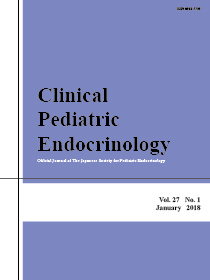Volume 29, Issue 3
Displaying 1-10 of 10 articles from this issue
- |<
- <
- 1
- >
- >|
Review
-
2020Volume 29Issue 3 Pages 91-97
Published: 2020
Released on J-STAGE: July 11, 2020
Download PDF (1170K)
Original Article
-
2020Volume 29Issue 3 Pages 99-103
Published: 2020
Released on J-STAGE: July 11, 2020
Download PDF (2177K) -
2020Volume 29Issue 3 Pages 105-110
Published: 2020
Released on J-STAGE: July 11, 2020
Download PDF (1305K)
Case Report
-
2020Volume 29Issue 3 Pages 111-113
Published: 2020
Released on J-STAGE: July 11, 2020
Download PDF (873K) -
2020Volume 29Issue 3 Pages 115-118
Published: 2020
Released on J-STAGE: July 11, 2020
Download PDF (905K)
Short Communication
-
2020Volume 29Issue 3 Pages 119-121
Published: 2020
Released on J-STAGE: July 11, 2020
Download PDF (1216K) -
2020Volume 29Issue 3 Pages 123-126
Published: 2020
Released on J-STAGE: July 11, 2020
Download PDF (1883K)
Mutation-in-Brief
-
2020Volume 29Issue 3 Pages 127-130
Published: 2020
Released on J-STAGE: July 11, 2020
Download PDF (1076K)
Letters to the Editor
-
2020Volume 29Issue 3 Pages 131-132
Published: 2020
Released on J-STAGE: July 11, 2020
Download PDF (539K) -
2020Volume 29Issue 3 Pages 133
Published: 2020
Released on J-STAGE: July 11, 2020
Download PDF (532K)
- |<
- <
- 1
- >
- >|
